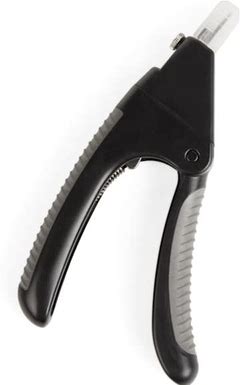A Guide for Pet Care:
Trimming your dog’s toenails is an essential part of their grooming routine and overall pet care. Proper nail trimming prevents discomfort, injuries, and other health issues. This comprehensive guide provides you with the necessary steps, tools, and precautions to ensure a safe and effective nail-trimming experience for your dog.
Tools You Need for Nail Trimming:
- Nail Clippers:
Guillotine Clippers:

Ideal for smaller dogs. These clippers have a small hole where you insert the nail and squeeze the handle to cut.
Scissor Clippers:

Suitable for larger dogs. They work like regular scissors but are designed to cut through tough dog nails.
- Nail Grinder: An electric grinder can be used to file down the nails, providing better control and reducing the risk of cutting into the quick.
- Styptic Powder: This is essential for stopping bleeding if you accidentally cut the quick.
- Treats: Rewards help keep your dog calm and make the trimming process more pleasant for them.
Step-by-Step Guide to Trim Your Dog’s Toenails:
1. Get Your Dog Comfortable:
Choose a quiet place where your dog feels safe. Handle your dog’s paws gently to get them used to the sensation. Use treats and praise to create a positive association with nail trimming.
2. Identify the Quick:
The quick is the sensitive part of the nail containing blood vessels and nerves. Identifying it is crucial to avoid causing pain or bleeding.
- Light-Colored Nails: The quick is visible as a pinkish area within the nail. Trim the white part, stopping before the pink area.
- Dark-Colored Nails: The quick is not visible. Trim small amounts at a time and check the cross-section of the nail. A small black dot in the center indicates you are near the quick.
3. Hold the Paw Firmly:
Hold your dog’s paw gently but firmly. Separate the toes to see each nail clearly.
4. Trim the Nails:
Using the appropriate clippers, trim a small portion of the nail at a time. Hold the clippers at a right angle to the nail and cut off the tip. If using a grinder, gently file the nail in short bursts to avoid heating it up.
5. Check for Bleeding:
If you accidentally cut the quick, apply styptic powder to stop the bleeding.
6. Smooth the Edges:
Use a nail file or grinder to smooth the edges of the nails after clipping.
7. Reward Your Dog:
Give your dog a treat and praise them for staying calm. Positive reinforcement helps make future nail trims easier.
Precautions to Take:
- Trim Small Increments: Especially if you or your dog are new to nail trimming, take your time. It’s better to trim a small amount more frequently than to risk cutting too much.
- Stay Calm: Dogs can sense your anxiety. Stay calm and confident to help your dog feel more at ease.
- Use Proper Tools: Ensure you are using the right size and type of clippers for your dog’s size and nail type.
- Regular Trimming: Trim your dog’s nails regularly to keep them at a healthy length. Overgrown nails can lead to pain and injuries.
- Seek Professional Help: If you’re unsure about trimming your dog’s nails or if your dog is particularly anxious or difficult to handle, consider seeking help from a professional groomer or veterinarian.
How to Determine the Safe Length to Trim:
Light-Colored Nails:
For dogs with light-colored nails, the quick is usually visible as a pinkish area within the nail. Trim the white part of the nail, stopping as you approach the pink area.
Dark-Colored Nails:
For dogs with dark-colored nails, the quick is not easily visible. Trim in small increments, checking the cross-section of the nail after each cut. The center of the nail will start to appear darker (a small black dot) as you approach the quick. Stop trimming when you see this change.
Additional Tips for Safe Nail Trimming:
- Desensitization: Gradually get your dog used to having their paws handled and the sight and sound of the clippers or grinder.
- Proper Lighting: Good lighting helps you see the nail structure clearly.
- Consult a Professional: If you’re unsure or uncomfortable, consult a professional groomer or veterinarian for a demonstration.
By following these steps and precautions, you can effectively and safely trim your dog’s toenails, ensuring their comfort and health. Regular practice and positive reinforcement will make the process easier and more comfortable for both you and your dog. Remember, maintaining your dog’s nail health is a crucial aspect of overall pet care.
